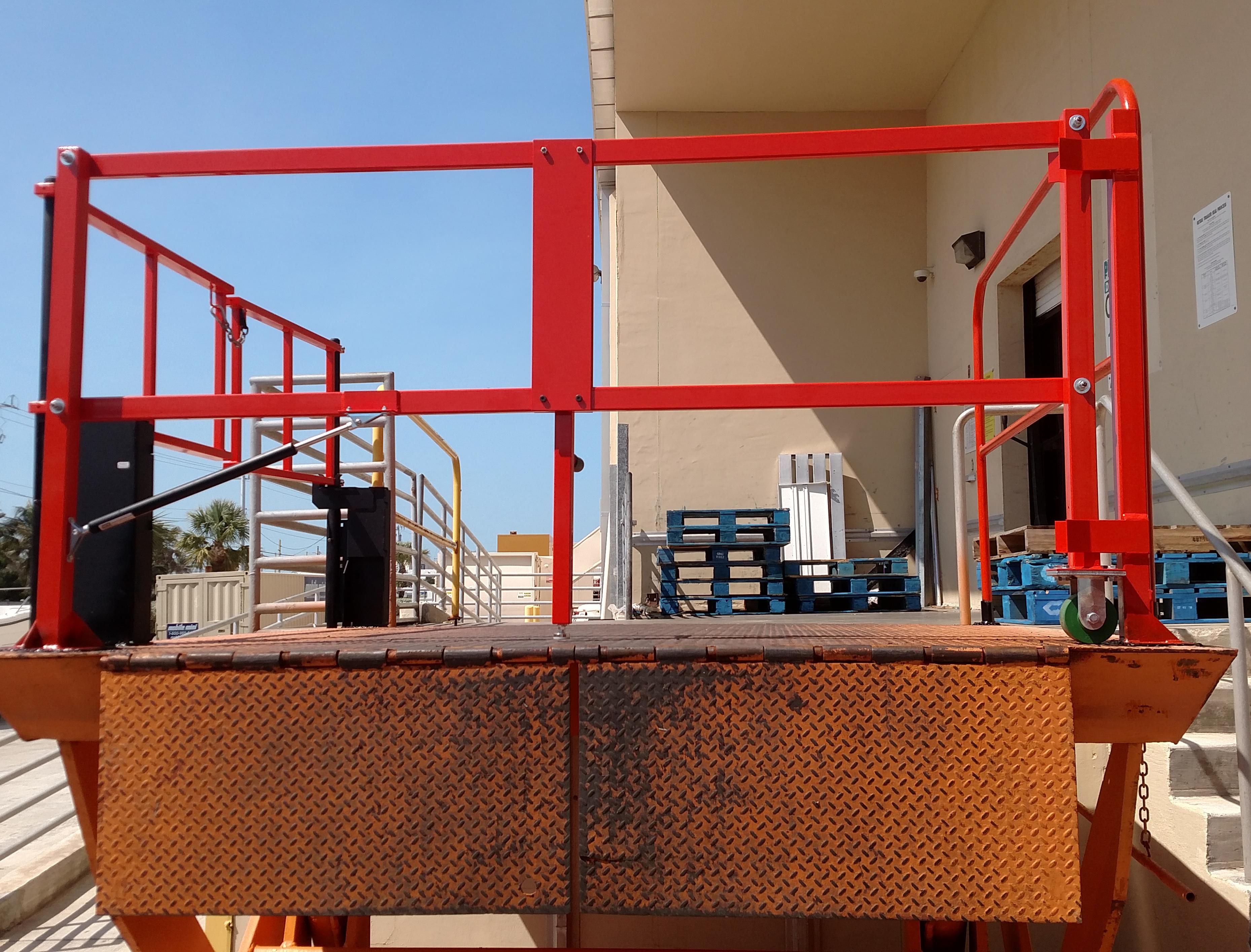
Four Points to Consider for Dock Lift Fall Protection
The loading dock is one of the most unsafe places in commercial facilities; it’s the location of 25 percent of all industrial accidents according to the United States Bureau of Labor Statistics. In today’s age of high demand for fast and often same day delivery of goods, daily activity at the loading dock is often fast paced and constant - trucks make deliveries and pick ups while employees load and unload material.
One source of risk for employees in the loading dock is a dock lift, used to transfer pallets of material on the ground level. Employees often ride the lift from ground or dock level to align with the tailgate of the tractor trailer when they are moving material on and off of the truck. When the lift elevates, employees are at risk for falls if there is no protection provided on the lift.
While lifts have notoriously been used without fall protection systems in the past, it is imperative to protect employees working at heights in any situation. The main sources for safety equipment in loading docks have been the dock itself and equipment used to protect the physical structure and vehicles. However, because falls do happen from lifts, fall protection is needed to ensure employees are safe while performing their repetitive daily tasks on them.
When you consider the type of safety gate for your loading dock lifts, remember these four points.
- Docks and material handling operations vary widely from facility to facility - even within the same parent company. Dock lifts come in various types and sizes based on location, traffic flow and the type of material being moved. Materials often come from separate distribution centers and individual suppliers, so most facilities have multiple applications that use lifts in dock operations. In the safety gate selection process, make sure you understand and communicate to the vendor the ways each lift is used in order to determine the right safety gate design for each lift.
- Lifts are often located in unique environments, so ensure the each dock lift safety gate configuration is suited for each lifts application. The most popular Dock-Lift safety gate configuration features gates that move in a crossing-guard style pattern. As the lift elevates, the gates automatically close and lock into place. The gates stay closed and locked until the lift goes back to ground level, providing fall protection while the lift is raised and material is moved from the lift, truck and dock. However, it is not the best design for every application. For example, if an awning limits the height for any equipment on the lift, a safety gate in which the gates swung outward instead of upward, like in the crossing-guard style, may be a better design.
- Lifts used on ground level within specific loading dock traffic patterns must accommodate the flow of the trucks moving around the area. Safety gates on lifts in these applications are best if equipped with gates that swing outward. The way that the gates move depends on the application; it could feature a single gate that covers the entire lift or use bi-parting gates that prevent the gate from obstructing the delivery area.
- Ensure the safety gates are configured to automatically close; this further ensures fall protection for any worker on the lift as the job of closing the gate is not left to that person. Because of the nature of the tiring, repetitive work closing the gates can be forgotten, leaving the worker vulnerable to injury.
Let us know if you have a loading dock lift or environment that you need to secure; we’d love to help.